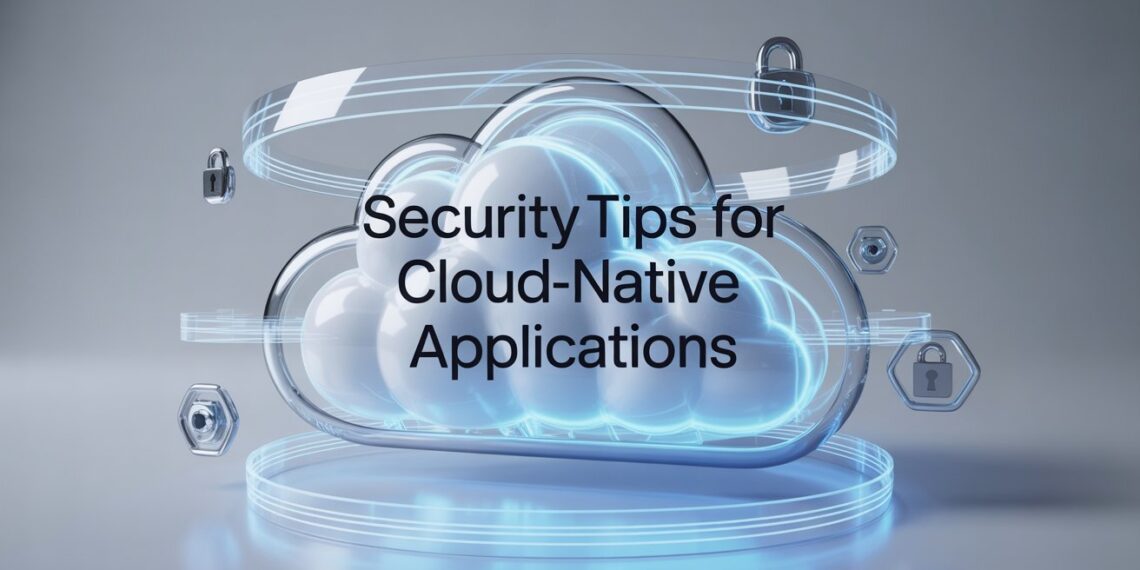Cloud-native applications have become the foundation of modern digital transformation, enabling scalability, agility, and resilience across hybrid and multi-cloud environments. However, this flexibility also introduces new security challenges. From misconfigured containers to exposed APIs and insecure orchestration pipelines, threats to cloud-native apps are evolving faster than ever.
As of 2025, Gartner reports that nearly 90% of new enterprise applications are cloud-native, and misconfiguration remains the leading cause of breaches. To stay protected, organizations must rethink how they approach security embedding protection directly into the development and deployment lifecycle.
What Are Cloud-Native Applications?
Cloud-native applications are software programs specifically designed to run in the cloud, leveraging modern practices like microservices, containers, APIs, orchestration, and continuous integration/continuous deployment (CI/CD). Unlike traditional apps that were “moved” to the cloud, cloud-native apps are built for the cloud from day one.
They use technologies such as Docker for containerization and Kubernetes for orchestration, ensuring scalability, portability, and automation. This allows teams to deploy updates quickly while maintaining consistency across environments.
Key Features of Cloud-Native Applications
Feature |
Description |
Example Tools |
|---|---|---|
Microservices Architecture |
Breaks applications into independent services for easier scaling and maintenance. |
Spring Boot, Node.js |
Containerization |
Packages apps into lightweight, portable units. |
Docker, Podman |
Orchestration |
Automates deployment and scaling. |
Kubernetes, OpenShift |
CI/CD Pipelines |
Enables rapid, automated testing and deployment. |
GitLab CI, Jenkins |
Elastic Scalability |
Dynamically adjusts resources based on demand. |
AWS Auto Scaling, GCP Autoscaler |
Resilience & Observability |
Self-healing, fault-tolerant systems with real-time monitoring. |
Prometheus, Grafana |
Why Cloud-Native Security Matters in 2025
Cloud-native systems operate across distributed environments containers, APIs, serverless functions, and multiple cloud providers. Each layer introduces potential vulnerabilities. With the rise of AI-powered attacks, supply chain compromises, and shadow IT, cloud-native security must shift from perimeter defense to zero-trust, code-to-cloud protection.
A report by IBM Security (2025) shows that average breach costs for cloud environments rose to $5.8 million, emphasizing the need for integrated security at every stage of the application lifecycle.
1. Implement Zero Trust Architecture
Zero Trust is no longer optional it’s the backbone of cloud-native security in 2025. The model assumes no user or device should be trusted by default, even within the corporate network. Every access request is continuously verified.
Best Practices:
-
Enforce least privilege and continuous authentication.
-
Use policy-based access control (PBAC) in Kubernetes.
-
Integrate microsegmentation to isolate workloads.
2. Enforce Multi-Factor Authentication (MFA)
MFA remains a simple yet powerful defense. In 2024–2025, phishing-resistant MFA (like hardware keys or biometric verification) has become a new standard, especially for privileged cloud accounts.
Additions for 2025:
-
Use WebAuthn or FIDO2 tokens for admin access.
-
Pair MFA with conditional access based on device health, IP, and risk level.
3. Continuous Monitoring and Threat Detection
Traditional static monitoring no longer works for dynamic cloud environments. Modern solutions use AI-driven analytics and runtime security to detect anomalies.
Key Practices:
-
Centralize logs with tools like Elastic Stack or Datadog.
-
Enable Kubernetes audit logs and cloud-native SIEM integration.
-
Use threat detection models that understand container behaviors.
4. Encrypt Data Everywhere
Data encryption is now mandatory for both compliance and protection. As of 2025, confidential computing where data is encrypted even during processing is gaining traction.
Key Areas:
-
Use TLS 1.3+ for all in-transit communications.
-
Encrypt secrets with HashiCorp Vault or AWS KMS.
-
Consider post-quantum encryption algorithms (NIST-approved) for future-proofing.
5. Adopt DevSecOps Practices
Security must be part of development not an afterthought. DevSecOps integrates automated scanning, dependency checks, and compliance testing into CI/CD.
2025 Enhancements:
-
Use SAST, DAST, and SCA tools integrated into pipelines.
-
Employ AI-based code scanning tools like GitHub Advanced Security.
-
Embed security-as-code into deployment manifests (Helm, Terraform).
Comparison Table: DevOps vs DevSecOps
Aspect |
DevOps |
DevSecOps |
|---|---|---|
Focus |
Speed and automation |
Security integrated into every stage |
Testing |
Functional and performance |
Continuous vulnerability testing |
Ownership |
Shared between dev and ops |
Shared across dev, sec, and ops |
Tools |
Jenkins, Docker |
Aqua, Snyk, Prisma Cloud |
6. Create and Test an Incident Response Plan
A strong Incident Response (IR) plan prepares your organization for inevitable breaches or misconfigurations. In 2025, cloud IR must include container forensics and AI-assisted response automation.
Best Practices:
-
Define clear escalation procedures.
-
Simulate breaches using chaos engineering tools.
-
Automate alert triage using SOAR (Security Orchestration, Automation, and Response) systems.
7. Conduct Third-Party Risk Assessments
Modern cloud-native stacks rely heavily on open-source and third-party components. Each dependency introduces potential vulnerabilities.
Tips:
-
Use SBOM (Software Bill of Materials) to track dependencies.
-
Regularly audit vendors using SOC 2 Type II or ISO 27001 standards.
-
Prefer vendors with runtime security certifications.
8. Strengthen Serverless Security
Serverless computing (like AWS Lambda or Azure Functions) simplifies infrastructure but increases visibility challenges.
2025 Best Practices:
-
Implement runtime monitoring for functions.
-
Restrict permissions via least privilege IAM roles.
-
Use environment variable encryption for secrets.
New Trend: “Function-level firewalls” that block malicious requests before invocation.
9. Reinforce Identity and Access Management (IAM)
Identity remains the new security perimeter in 2025. Misconfigured IAM policies are among the top causes of breaches.
Key Recommendations:
-
Implement Just-in-Time (JIT) access for admins.
-
Automate role reviews and access revocation.
-
Use IAM analyzers in AWS and GCP to detect misconfigurations.
10. Prioritize Employee Training and Culture
Human error still accounts for over 70% of cloud incidents (according to Palo Alto Networks’ 2025 report). Regular, gamified training helps employees spot phishing, misconfigurations, and suspicious behavior early.
Tips:
-
Run quarterly simulations.
-
Train developers in secure coding for containers and APIs.
-
Reward teams that identify potential risks early.
Key Takeaways
Cloud-native applications are transforming industries but with great agility comes greater responsibility. By integrating Zero Trust, DevSecOps, continuous monitoring, and AI-driven protection, organizations can build resilience from code to production.
As threats evolve in 2025, the best defense is a proactive, automated, and educated approach to security.
FAQs
1. What makes cloud-native security different from traditional app security?
Traditional apps secure static infrastructure; cloud-native apps need dynamic, automated, and distributed defenses across containers, APIs, and microservices.
2. How can I secure Kubernetes workloads?
Use Pod Security Standards, enable RBAC, use network policies, and implement image scanning for vulnerabilities.
3. Are serverless applications less secure?
Not inherently but they shift responsibility to configuration and monitoring. Proper IAM, runtime protection, and code scanning reduce risks.
4. What’s the future of cloud-native security in 2025 and beyond?
AI-assisted security, zero-trust networking, confidential computing, and automated compliance enforcement will define the next era of protection.









